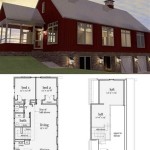How to Design a Sustainable Homestay System with Container Houses
The rise of sustainable tourism has led to a growing interest in eco-friendly accommodation options. Container houses offer a unique and innovative solution for creating sustainable homestay systems that minimize environmental impact while providing comfortable and affordable lodging for travelers. This article will explore key considerations for designing a sustainable container house homestay system.
1. Prioritize Sustainable Building Materials and Practices
Sustainability begins with the materials and construction methods used. For container houses, prioritizing recycled and repurposed materials is crucial. Shipping containers themselves represent a sustainable choice, as they are often discarded after a single use. By repurposing these containers, builders can reduce waste and minimize the environmental impact of construction.
Furthermore, incorporating sustainable building practices throughout the design and construction process is essential. This includes: * Utilizing energy-efficient insulation materials to minimize heat loss and gain, reducing the reliance on heating and cooling systems. * Employing sustainable building techniques like green roofs and rainwater harvesting systems to conserve water resources. * Selecting low-VOC paints and finishes to improve indoor air quality and reduce harmful emissions. * Opting for locally sourced materials whenever possible to reduce transportation costs and support local economies.
2. Design for Energy Efficiency and Renewable Energy Sources
Energy efficiency is another crucial aspect of sustainable homestay design. Container houses, due to their compact size, can be designed for optimal energy efficiency. Integrating passive solar design techniques, such as strategically placed windows for natural lighting and ventilation, can significantly reduce energy consumption.
Implementing renewable energy sources, such as solar panels, wind turbines, or geothermal systems, can further reduce reliance on fossil fuels. These technologies can generate electricity for lighting, appliances, and even hot water, minimizing the carbon footprint of the homestay. The integration of energy-efficient appliances, such as LED lights and water-saving fixtures, also plays a significant role in achieving sustainable energy consumption.
3. Promote Responsible Tourism Practices
A sustainable homestay system goes beyond the construction of eco-friendly buildings. It involves fostering responsible tourism practices that minimize the impact on the local environment and culture. This includes: * Encouraging guests to engage in eco-friendly activities, such as hiking, cycling, or birdwatching, rather than motorized transportation or activities that harm the local ecosystem. * Providing guests with information about local culture, traditions, and environmental issues to promote awareness and responsible behavior. * Partnering with local businesses and communities to provide guests with authentic experiences and support local economies. * Implementing waste management systems that minimize waste generation and encourage recycling and composting. * Offering guests the option to offset their carbon footprint through carbon offsetting programs or by supporting local environmental initiatives.
4. Create a Comfortable and Welcoming Space
While sustainability is paramount, it is equally important to create a comfortable and welcoming space for guests. Container houses can be transformed into stylish and functional living spaces with thoughtful design.
This includes: * Optimizing the layout of the space to maximize functionality and create a sense of spaciousness. * Incorporating natural materials and sustainable furniture to create a warm and inviting ambiance. * Providing amenities that meet the needs of travelers, such as comfortable beds, well-equipped kitchens, and high-speed internet access. * Creating a welcoming environment for guests through personalized touches and attentive service.
By following these key principles, container houses can be transformed into sustainable and welcoming homestay systems that offer unique and eco-friendly lodging options for conscious travelers. This approach not only minimizes environmental impact but also contributes to the well-being of local communities and promotes responsible tourism practices.

Leading Mobile Container Homestay Innovative House Designs Suppliers Manufacturers Chinacontainers Com

Leading Mobile Container Homestay Innovative House Designs Suppliers Manufacturers Chinacontainers Com

Leading Mobile Container Homestay Innovative House Designs Suppliers Manufacturers Chinacontainers Com

Low Cost New Design Prefab Steel Structure Hotel Building Plans

Eco Friendly Aspects Of 2 Bedroom Container Living

Leading Mobile Container Homestay Innovative House Designs Suppliers Manufacturers Chinacontainers Com

Eco Sensitive Building Designs Sustainable Urban Development 20ft Container House For Temporary Studio Or Entertainment Space Prefabricated Homes Modular Houses Made In China Com

Container House Used In Greenhouse

Low Cost New Design Prefab Steel Structure Hotel Building Plans

Eco Sensitive Building Designs Sustainable Urban Development 20ft Container House For Temporary Studio Or Entertainment Space Prefabricated Homes Modular Houses Made In China Com
Related Posts








